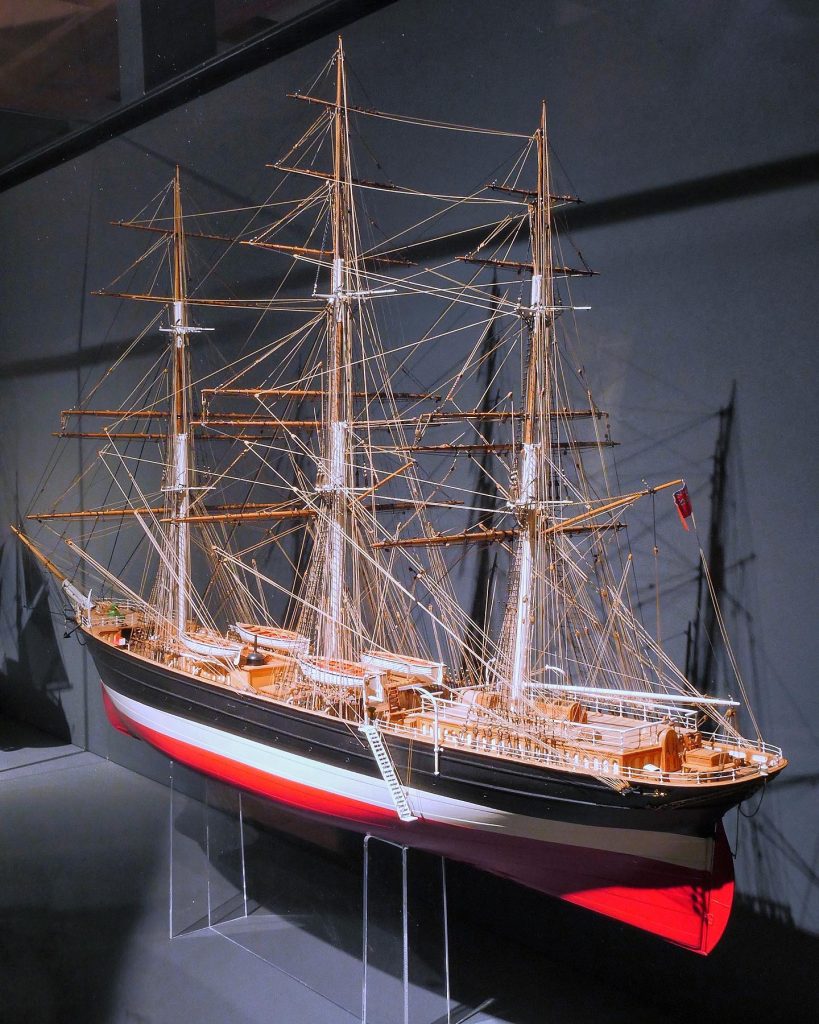
Merchant Sailor Coriolanus. This beautiful model, masterfully built by Erwin Brodtke to a scale of 1:75, is part of our exhibition about the history of the sailing ship on Deck 2 of the museum.
Named after William Shakespeare’s „The Tragedy of Coriolanus,“ the ship is a fine example of the large, steel-built fast sailing vessels that competed with steamships in the second half of the 19th and early 20th centuries.
The clipper „Coriolanus“ was built in 1876 by the shipyard of Archibald McMillan & Son in Dumbarton, Scotland. In 1877, it sailed from the Scilly Isles to Calcutta in just 69 days for its original owner, John Patton, Jr. & Co. of London. This record was never to be surpassed by any sailing ship. And that was only the beginning of a career as long as it was eventful. The „Coriolanus“ took part in the sea trade in nitrate between Chile and Europe, which made her a Cape Horner. In 1891 she was bought by the German company I. F. Ramien and sailed for the company for almost 10 years. In 1902, she was caught in a severe storm off Port Elisabeth, South Africa, and stranded. The „Coriolanus“ was so badly damaged that she was declared a total loss. However, in 1903 the Norwegian company E. B. Aaby bought the wreck and made her seaworthy again under the name „Lina“. In 1921 she was bought by American owners who registered her in Panamá and renamed her „Tiburón“. The use of the flag of Panamá was a ploy of the Americans to avoid the restrictions of Prohibition (law on the production and trade of alcoholic beverages between 1920 and 1933). This has been one of the main reasons that „flags of convenience“ emerged. The ship was detained in Boston with a cargo of alcohol in the same year. The „Tiburón“ now came to Portuguese owners, who renamed her „Eugenia Emilia“. In 1923, she was laid up in Praia, Cape Verde, with contraband. In 1927, new owners returned her to her original name. She retained that name until 1936, when she was scrapped in Fall River, Massachusetts, after 60 years of service.
This beautiful model, masterfully built by Erwin Brodtke to a scale of 1:75, is part of our exhibition about the history of the sailing ship on Deck 2 of the museum.
